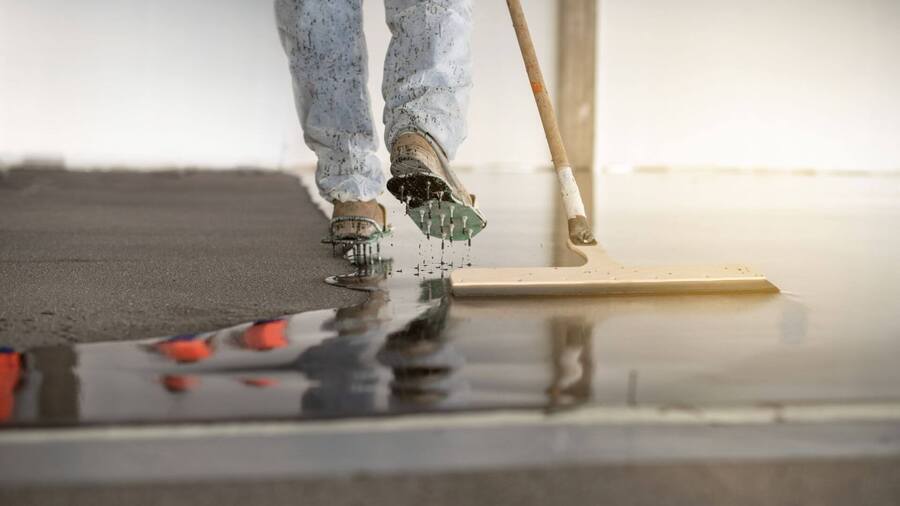What are the Environmental Impacts of Epoxy Flooring? Learn the Facts
Epoxy flooring has become a popular choice for many commercial and residential properties. It is durable, low-maintenance, and can create a variety of decorative finishes. However, it is crucial to consider the potential environmental impacts of epoxy flooring. In this article, we will explore the ecological impacts of epoxy flooring.
What is Epoxy Flooring?
Epoxy flooring is a type of flooring that is created by applying a resin and hardener mixture to a concrete surface. The mixture chemically bonds to the concrete, creating a strong and durable surface. Epoxy flooring is often used in industrial and commercial settings because of its durability, chemical resistance, and ability to withstand heavy foot and vehicle traffic.
Environmental Impacts of Epoxy Flooring
Production and Transportation
The production and transportation of epoxy flooring materials can impact the environment. Producing epoxy resin and hardeners involves using chemicals that can be harmful to the environment. Additionally, transporting these materials can contribute to greenhouse gas emissions and air pollution.
Indoor Air Quality
Epoxy flooring can have an impact on indoor air quality. The resin and hardener mixture can release volatile organic compounds (VOCs) into the air during installation. VOCs can cause eye, nose, and throat irritation, headaches, and dizziness. They can also contribute to the formation of ground-level ozone and smog, which can be harmful to human health and the environment.
Disposal
The disposal of epoxy flooring materials can also impact the environment. Epoxy flooring cannot be easily recycled or reused, and it may end up in landfills where it can leach chemicals into the soil and groundwater.
Maintenance
The maintenance of epoxy flooring can also have an impact on the environment. The cleaning products and methods used to maintain epoxy flooring can contain chemicals that can harm the environment. Additionally, operating heavy machinery to maintain and repair epoxy flooring can contribute to air and noise pollution.
How to Reduce Environmental Impact by Choosing Epoxy
While there are potential environmental impacts associated with epoxy flooring, it is important to note that it can also be a sustainable option when chosen and installed correctly. Here are some ways to reduce the environmental impact of epoxy flooring by making wise choices:
Choose a Sustainable Epoxy Supplier
When selecting an epoxy supplier, consider a company prioritizing sustainability and environmentally-friendly practices. Some manufacturers offer eco-friendly options, such as using recycled materials, low-VOC formulations, or participating in take-back programs.
Consider Recycled Aggregate Epoxy
Recycled aggregate epoxy is an option that uses recycled materials, such as crushed glass, to create a unique and sustainable finish. This type of epoxy is a good choice for those who want an environmentally-friendly flooring option that is also visually appealing.
Avoid Harmful Chemicals
Be aware of the chemicals used in the epoxy flooring products you are considering. Avoid products that contain harmful chemicals such as formaldehyde, isocyanates, and heavy metals. Look for certified products certified by organizations, ensuring that the products meet strict environmental and health standards.
Proper Installation
Proper installation is critical to reducing the environmental impact of epoxy flooring. Improper installation can lead to issues such as delamination, which can result in wasted materials and ecological harm. Choose a reputable installer with experience with eco-friendly practices who can adequately install the epoxy flooring.
FAQs
What is epoxy flooring?
Epoxy flooring is a type of flooring created by applying a mixture of resin and hardener to a concrete surface. It is known for its durability, chemical resistance, and ability to withstand heavy foot and vehicle traffic.
What are the environmental impacts of epoxy flooring?
The environmental impacts of epoxy flooring include the production and transportation of materials, indoor air quality concerns, disposal issues, and maintenance impacts.
How can I reduce the environmental impact of epoxy flooring?
To reduce the environmental impact of epoxy flooring, choose low-VOC products, properly dispose of materials, use environmentally-friendly maintenance practices, select a sustainable epoxy supplier, consider recycled aggregate epoxy, avoid harmful chemicals, and ensure proper installation.
Can epoxy flooring be recycled or repurposed?
While recycling or repurposing epoxy flooring is difficult, some manufacturers offer take-back programs, which allow customers to return their used epoxy flooring materials for recycling or disposal.
When deciding about flooring options, it is essential to consider the environmental impact and choose materials that prioritize sustainability. Choosing epoxy flooring does not have to come at the expense of the environment. By selecting a sustainable epoxy supplier, considering recycled aggregate epoxy, avoiding harmful chemicals, and properly installing the epoxy flooring, you can reduce the environmental impact of epoxy flooring while still enjoying its benefits.
Key Takeaways
- Epoxy flooring can have environmental impacts on production, disposal, maintenance, and indoor air quality.
- To reduce the environmental impact of epoxy flooring, consider low-VOC products, proper disposal, and environmentally-friendly maintenance practices.
- Selecting a sustainable epoxy supplier, considering recycled aggregate epoxy, avoiding harmful chemicals, and proper installation are other ways to reduce the environmental impact of epoxy flooring.
- When deciding about flooring options, it is crucial to consider the environmental impact and choose materials that prioritize sustainability.

